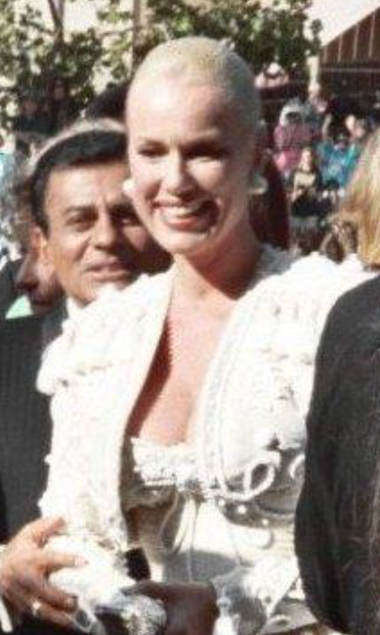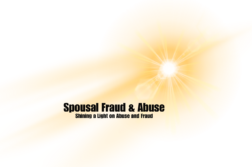Elder Abuse
Exposing the Hidden Realities of Abuse and Fraud
Elder abuse is a global issue that often goes unnoticed, affecting some of the most vulnerable members of society. It is a betrayal of trust that undermines the dignity, safety, and well-being of older adults. Abuse can take many forms, including physical harm, emotional manipulation, financial exploitation, or neglect, and its consequences are devastating.
Predators, including manipulative caregivers, deceitful family members, spouses and financial opportunists, often target older individuals—particularly those who are successful, wealthy, or emotionally vulnerable. Many of these abusers use coercion, isolation, and psychological tactics to gain control, stripping their victims of their independence and assets.
At Spousal Fraud & Abuse, we shine a light on this hidden crisis by exposing real-life cases of elder abuse, providing resources to help individuals recognize warning signs, and advocating for systemic change to protect older adults.
Elder Abuse: A Hidden Crisis and Stories of Exploitation
What Is Elder Abuse?
Elder abuse refers to intentional acts or neglect that harm an older adult. This abuse occurs in relationships where trust is expected, and perpetrators are often family members, caregivers, or financial advisors. Common forms of elder abuse include:
- Physical Abuse: Harm caused by violence, restraint, or neglect.
- Emotional Abuse: Verbal assaults, threats, or manipulative behaviors used to control or demean.
- Financial Exploitation: Misuse of assets, theft, or coercion into financial decisions.
- Neglect: Failing to provide basic needs such as food, medical care, or hygiene.
Notable Cases of Elder Abuse
Keya Morgan & the Exploitation of Stan Lee
Keya Morgan, a memorabilia dealer and former business associate of Marvel Comics legend Stan Lee, was accused of elder abuse and financial exploitation. Morgan allegedly manipulated Lee, took control of his finances, and isolated him from friends and family.
Despite Lee’s fame and vast resources, he was unable to prevent the deception and exploitation orchestrated by someone he trusted. This case underscores the need for stronger legal safeguards to protect elderly individuals—particularly those in high-profile or financially lucrative positions—from those who seek to abuse their trust.


Erin Fleming & the Manipulation of Groucho Marx
Actress Erin Fleming, once Groucho Marx’s manager and companion, was accused of exerting undue influence over the aging comedian, financially exploiting him and taking control of his personal affairs. Fleming allegedly manipulated Marx, isolated him from longtime friends and associates, and made decisions that prioritized her own interests over his well-being.
Despite multiple legal battles over Marx’s care and finances, Fleming retained significant control until the very end. His case serves as a cautionary tale about the dangers of opportunistic individuals who infiltrate the lives of vulnerable seniors under the guise of companionship and management. This case points to the unfortunate realization that elder abuse is nothing new; it has taken place for centuries.
Claudette Schwartz: A Case of Manipulation and Neglect
Claudette Schwartz (also known by various aliases including Claudette Spinelli, Claudette Spinelli Schwartz, Claudette Rickett, and Claudette Rickett Schwartz) is accused of manipulating and financially exploiting her husband, Mr. Schwartz, during his battle with cancer. Court documents reveal allegations of emotional and physical abuse, as well as disturbing claims of administering high doses of THC to subdue him.
Schwartz’s case illustrates that success, intelligence, and wealth do not shield individuals from abuse. The case exemplifies the need for vigilance, even in seemingly secure environments, and underscores the importance of recognizing red flags in personal relationships.


Jean Kasem & the Public Battle Over Casey Kasem
The late radio icon Casey Kasem became the focus of a bitter elder abuse case involving his wife, Jean Kasem. In his final years, Casey suffered from advanced Parkinson’s disease, leaving him vulnerable to neglect and exploitation.
Jean was accused of isolating him from his children, mismanaging his care, and controlling access to his medical treatment. Even after his death, legal battles continued over his treatment and estate, with his children fighting to expose Jean’s alleged mistreatment.
Casey Kasem’s case underscores the emotional toll elder abuse takes on families and the need for clear legal structures to prevent spouses or caregivers from exploiting those in their care.
Pauline Macareno & the Tragic Case of Violet Alberts
Pauline Macareno, a caregiver entrusted with the well-being of Violet “Evelyn” Alberts, a 94-year-old millionaire, was accused of extreme elder abuse—allegedly leading to her death. Macareno reportedly isolated Alberts from family and friends, took control of her finances, and mismanaged her care in a horrific betrayal of trust.
Albert’s case highlights several critical lessons:
- The Danger of Isolation: Abusers often cut off their victims from loved ones to maintain control.
- Monitoring Caregiver Behavior: Signs of controlling or suspicious behavior—such as discouraging family visits, sudden financial changes, or unexplained injuries—should never be ignored.
- Thorough Background Checks: Proper vetting of caregivers is essential to ensuring an elderly person’s safety.
This tragic case serves as a grim reminder of how elder abuse can escalate to fatal consequences when left unchecked.


Recognizing the Signs of Elder Abuse
Identifying elder abuse is critical for intervention and prevention. Key warning signs include:
- Unexplained injuries or frequent visits to medical professionals.
- Sudden changes in financial status or missing assets.
- Withdrawal from social activities or unusual emotional behavior.
- Neglected appearance, malnutrition, or untreated medical conditions.
- Fear or discomfort around certain individuals.
- Isolation
Each of the cases above demonstrates how these warning signs often go unnoticed until significant harm has occurred.

What Can Be Done ?
Awareness, education, and action are vital to combating elder abuse. Steps that can be taken include:
- Raising Awareness: Sharing stories like those of Stan Lee, Groucho Marx, Casey Kasem, Violet Alberts, and others helps highlight the prevalence of elder abuse.
- Conducting Background Checks: Hiring firms to run comprehensive reports on caregivers, financial advisors, or new acquaintances can help uncover red flags.
- Intervening Early: Reporting concerns to adult protective services, law enforcement, or legal professionals can save lives.
- Creating Safeguards: Legal tools such as conservatorships and power of attorney appointments can help protect older adults’ finances and care.
- Building Support Systems: Encouraging open communication and maintaining strong social networks can reduce vulnerability to abuse.
Call to Action
Elder abuse is a pervasive issue that demands attention and action. The stories of Keya Morgan, Erin Fleming, Jean Kasem, Claudette Schwartz, Pauline Macareno, and others show that no one is immune from exploitation.
By raising awareness, advocating for stronger protections, and providing resources, we can create a world where older adults are treated with the dignity and respect, they deserve.
If you suspect elder abuse, act immediately—your intervention could save someone from harm. Together, we can expose those who prey on the elderly and ensure justice for those who have been wronged.
